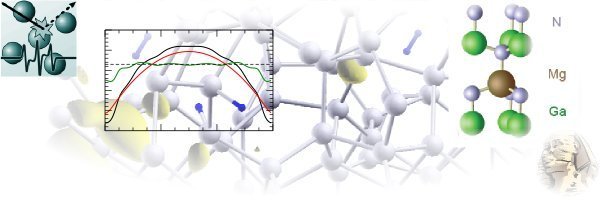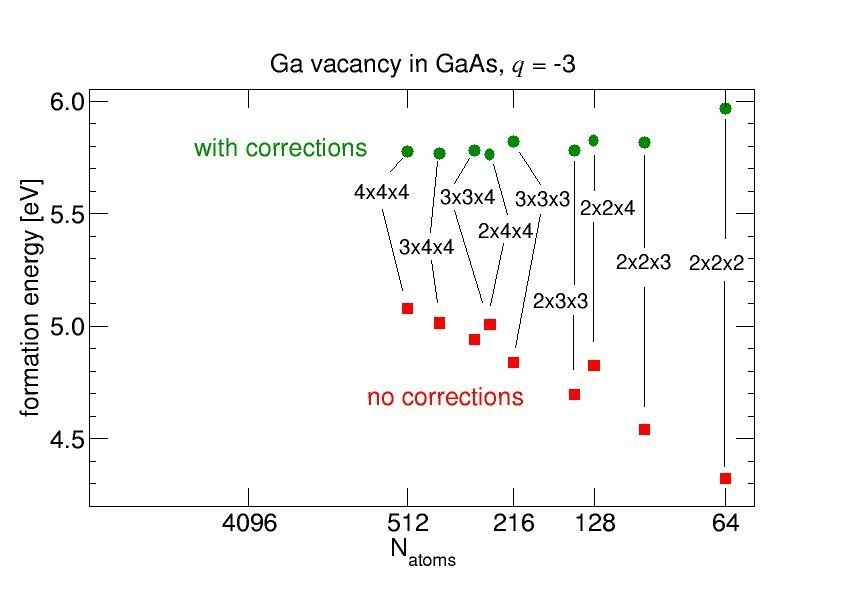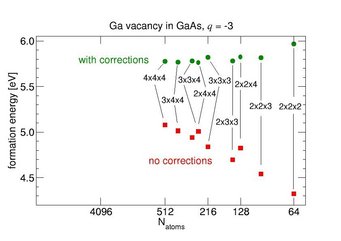
Defect Chemistry and Spectroscopy
The Defect chemistry and Spectroscopy group's aim is to develop multi-scale simulation techniques for point defects and related topics, and to apply them to problems in functional materials design.

Code development
An important activity is to maintain and extend our in-house DFT library S/PHI/nX. Recent achievements include
- atomic spin constraints
- optimized key routines (FFT-based convolution, reciprocal space projection) to improve performance on modern multi-core, vectorized CPUs
- on-the-fly parameterized internal-coordinate Hessian for quasi-Newton optimization for energy minima and transition states.
- complete rewrite of the underlying vector class to prepare for new projects
Multi-scale method development

Perfomance of the supercell correction scheme.
© Christoph Freysoldt, Max-Planck-Institut für Eisenforschung GmbH
- supercell corrections for charged defects (see sxdefectalign tool)
- supercell corrections for charged defects at surfaces
- generalized dipole correction to simulate surfaces under extreme fields
Intelligent Algorithms
- Redundant-internal coordinate optimization learning force-constants on the fly
- Automatic feature detection in atomically resolved STEM images
- Segmentation of APT data sets
- Phasefield-informed neural networks for extracting phase-transformation kinetics from STEM
Applications
We work in the following application fields:
- GaN-based alloys for high-performance LEDs
- thin film solar cell materials
- oxides & corrosion
People | Projects | Publications |
